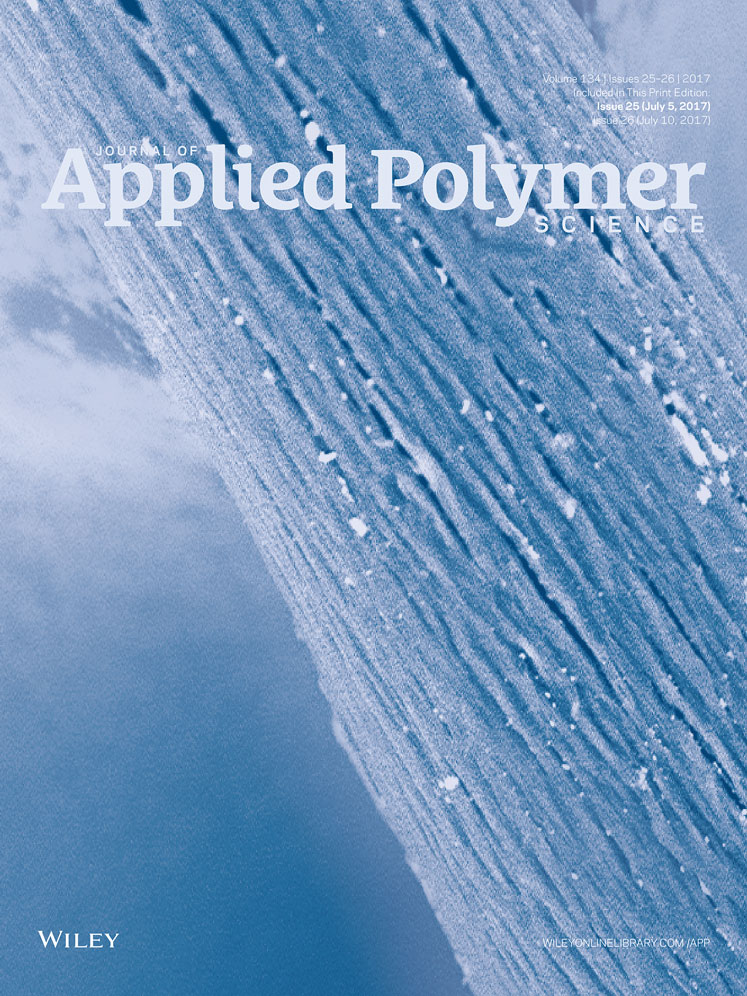Fixation of cationic P (st-BA-AA-GMA) emulsion on pigment particles in dyeing of cotton fabrics
ABSTRACT
Cationic copolymer emulsions of St, BA, AA, and GMA were successfully synthesized via semi-continuous emulsion polymerization. The properties of synthesized cationic emulsions were characterized by monomer conversion and solid content, differential scanning calorimeter, particle size and distribution, zeta potential, and centrifugal stability. The film performance of the cationic emulsions formed on cotton fiber surface was observed by scanning electricity microscopy. The influence of cationic emulsions on the color data, K/S values and rubbing fastness of dyed cotton fabrics was also investigated. The results show that P (St-BA-AA-GMA) emulsion had larger particle size and higher zeta potential than P (St-BA-AA) emulsion. When the films were formed at room temperature, P (St-BA-AA-GMA) emulsion film had better performance than P (St-BA-AA) emulsion film. The addition of GMA monomers improved the film performance. P (St-BA-AA-GMA) emulsion films formed at 120 °C after acetic acid solution treatment had the best water resistance. Dyed cotton fabrics pretreated with P (St-BA-AA-GMA) emulsion had better pigment dyeing performance than those pretreated with P (St-BA-AA) emulsion. It demonstrates that the addition of GMA monomers further improved the effect of pigment dyeing for cotton fabrics with cationic emulsions as binders. With the increase of P (St-BA-AA-GMA) concentration, the color performance of dye fabrics improved while the rubbing fastness decreased a little. But, the handle and fastness still meets the use standards for consumers. © 2017 Wiley Periodicals, Inc. J. Appl. Polym. Sci. 2017, 134, 44987.




